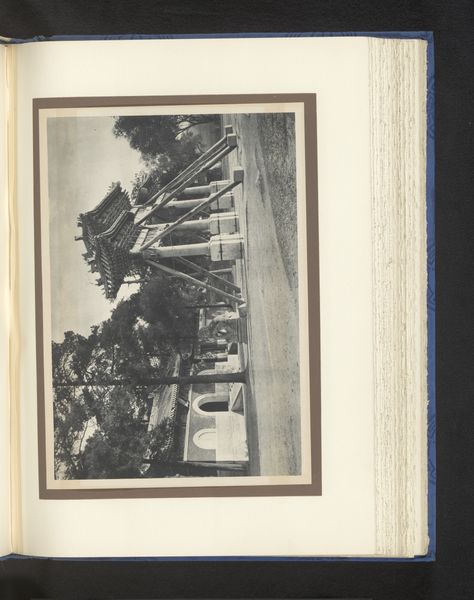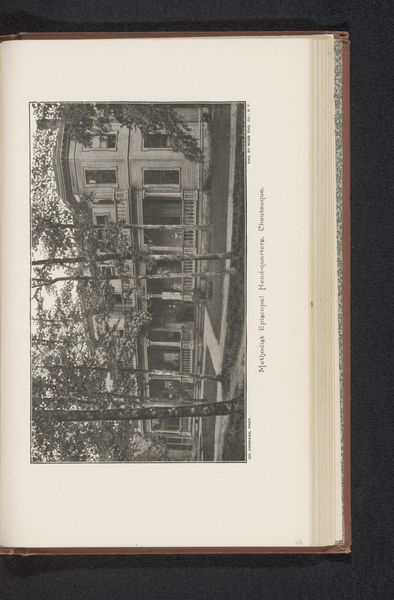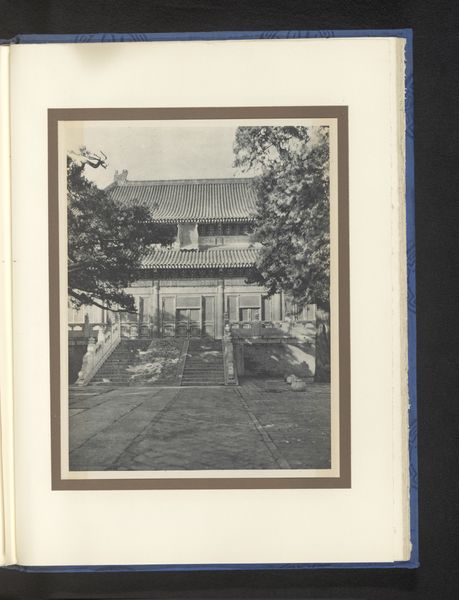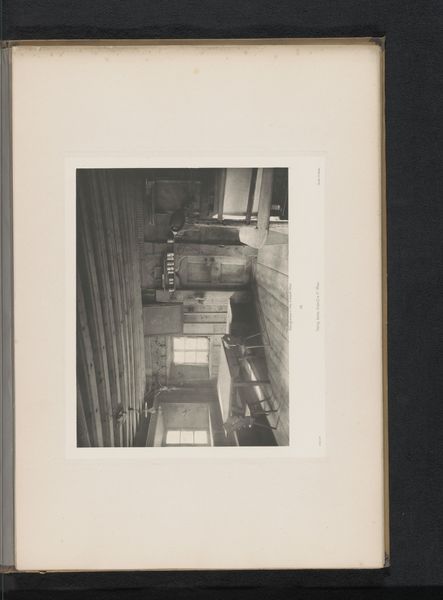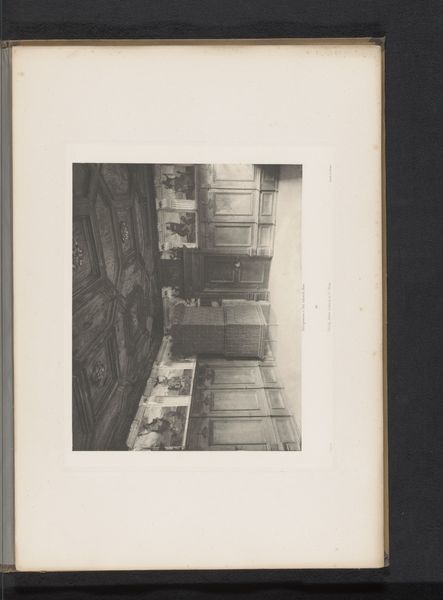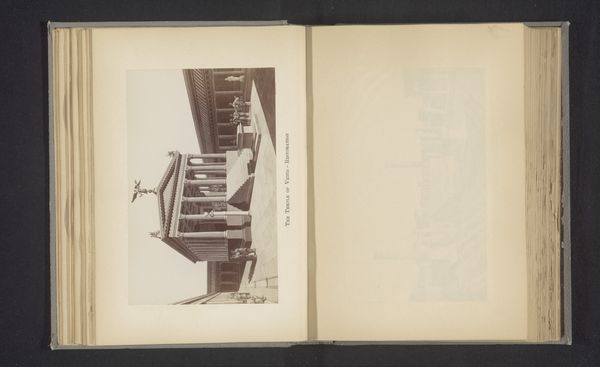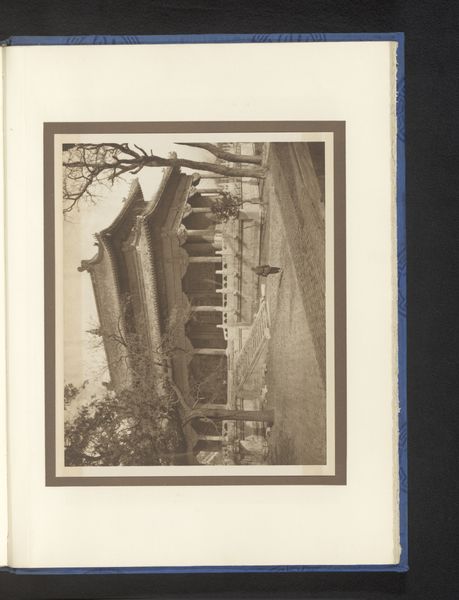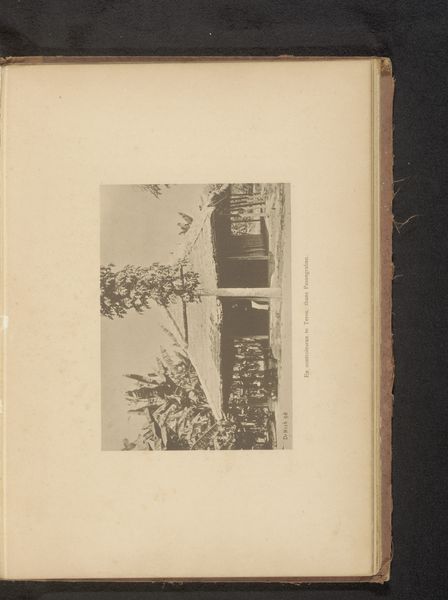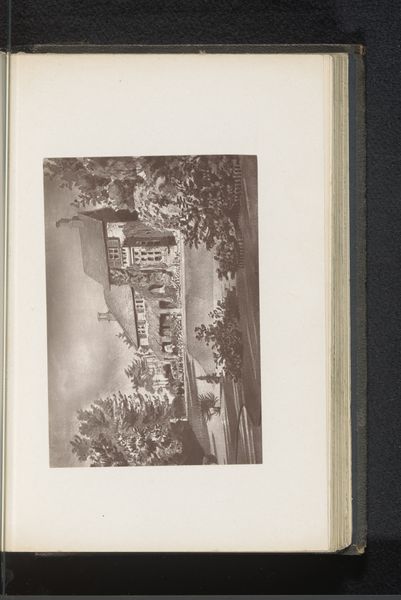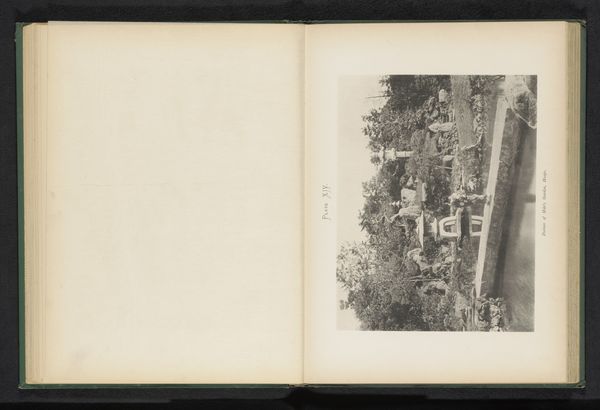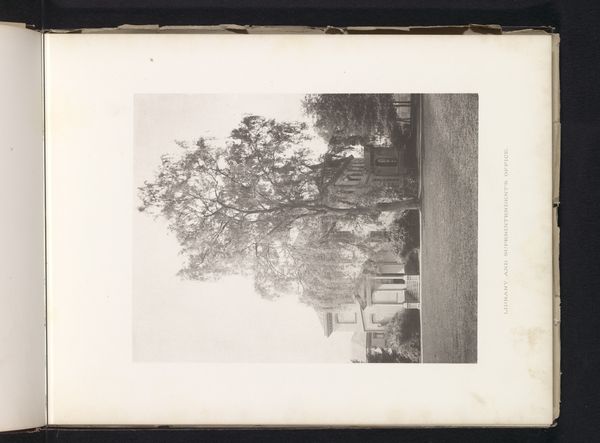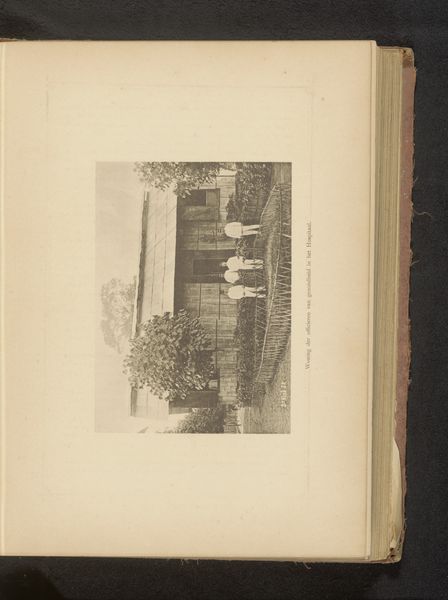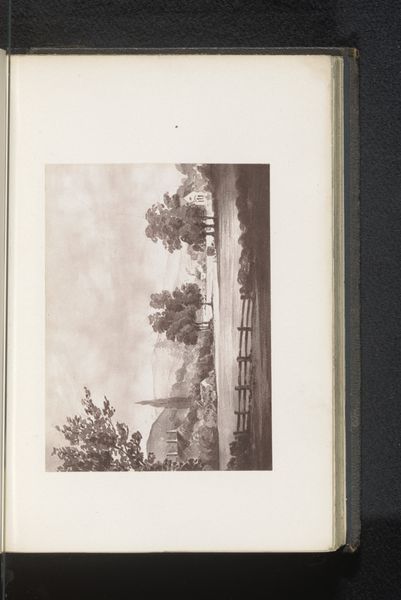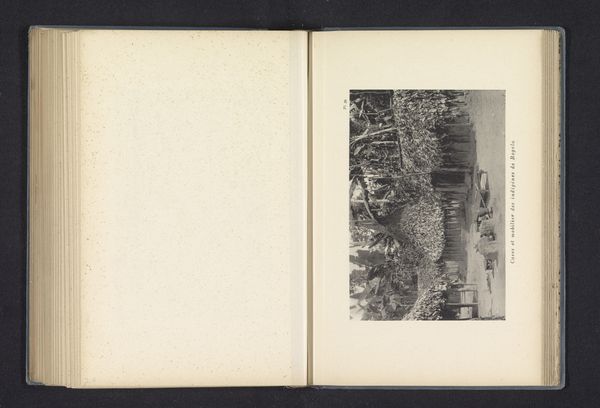
print, photography, architecture
# print
#
asian-art
#
landscape
#
photography
#
orientalism
#
architecture
Dimensions: height 203 mm, width 272 mm
Copyright: Rijks Museum: Open Domain
Curator: This photographic print is titled "Gezicht op een binnenplaats te Peking," which translates to "View of a courtyard in Beijing." It's attributed to Donald Mennie and dates to before 1920. Editor: My first impression is one of serene monumentality. The heavy shadows lend a sense of weight, of permanence, to the architectural forms. Curator: Mennie has achieved a striking interplay of light and shadow here, wouldn't you agree? Observe how the stark contrast emphasizes the rhythmic patterns of the roof tiles and the intricate bracketing system. The composition directs our gaze along a precise diagonal, creating depth within a two-dimensional plane. Editor: Absolutely. And I can't help but think about the symbolism inherent in the courtyard. Courtyards in Chinese architecture weren't merely spaces; they represented enclosed worlds, protected from outside chaos, places of reflection. I imagine the play of light and shadow, emphasized in Mennie’s image, suggesting the shifting balance of Yin and Yang. Curator: Precisely. Note how Mennie has framed the composition with elements of the architecture itself, the pillars. Through the vantage point selected by the artist, it offers a framed, self-contained perspective, drawing the viewer's focus. One might say that the building becomes a lens. Editor: The architectural style suggests this wasn't simply a private residence, right? The scale and details like the decorated windows intimate something more official, perhaps even related to the imperial structure itself. And there is a deliberate choice in rendering this space so stark and absent of human activity, evoking a sense of ageless dignity. Curator: An evocative point. The monochromatic palette also reduces the architecture to its essence, allowing the viewer to focus on form and spatial relationships above all. It speaks of a careful reduction that favors geometrical clarity and a celebration of structural design. Editor: This resonates strongly, emphasizing the power of place and memory enshrined within architectural form. This image captures both the essence and the echoes of a profound cultural symbol. Curator: Indeed. Through an elegant study of contrasts, the photographic approach provides us with something beyond documentation; a subtle exploration of architectural syntax. Editor: Yes, and simultaneously, it’s a journey into the enduring legacy and unspoken narratives residing within ancient Chinese architecture.
Comments
No comments
Be the first to comment and join the conversation on the ultimate creative platform.
